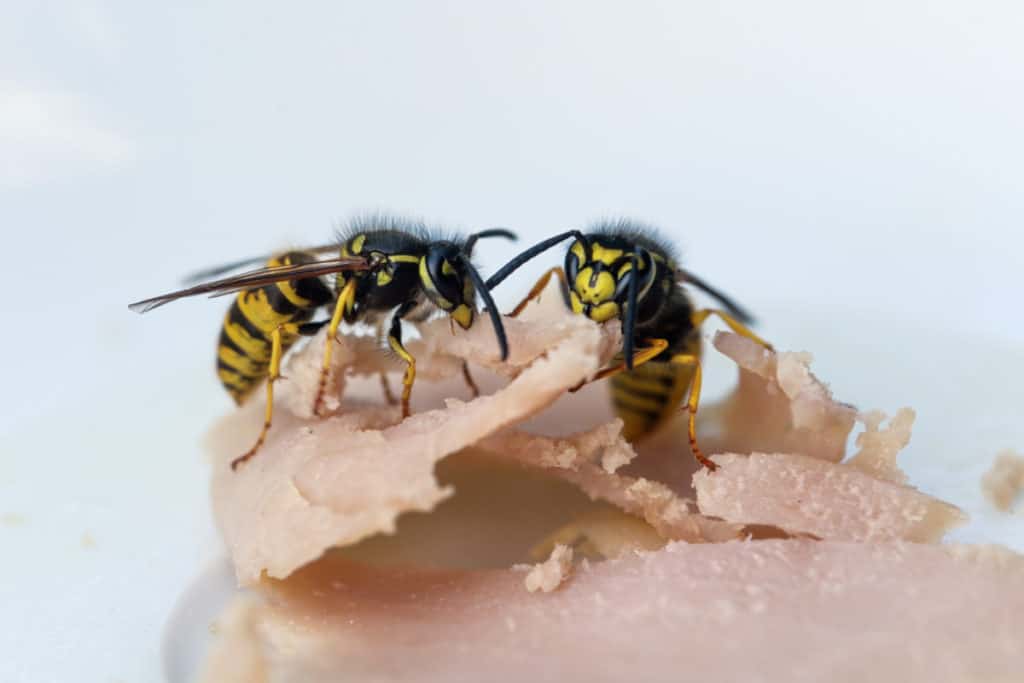They come in different colors of orange, metallic blue, and red. But it is most certainly the familiar black and yellow that we’re accustomed to. What’s more, they are also known for their elongated bodies and wings, not to mention those ominous buzzing sounds which have become synonymous with danger everywhere and the risk of a very, very painful sting.
However, according to insect enthusiasts and entomological experts (scientists fascinated with arthropods of the six-legged variety), hornets and wasps aren’t quite the same.
So what’s the difference between them? And how can you tell the identity of that not-so-little fellow who seems to be buzzing at you?
As a general rule, hornets are larger than wasps. They also tend to be more social as well. Both are part of the Vespid family. Hornets and wasps have social and solitary species. They have a similar life expectancy and have similar diets. Hornets however tend to be less aggressive than most wasps.
What other differences exist between them, in terms of diet and lifestyle? How do they build their homes? What do they like to eat? Whose stings hit harder?
The answers to all these questions and more have been carefully put together and are provided right here for your reading pleasure.
Wasps Vs Hornets: A Brief Introduction
The first step in our quest for finding out all how these fascinating creatures differ from each other is taking a closer peek at them to find out a few fundamental facts about each group.
Wasps
With an appearance that is somewhat reminiscent of a large winged ant – except for the occasionally larger-sized abdomen – these insects are part of a larger group (or order) known as Hymenoptera. Their diversity is astounding – about 100,000 species exist.
While some species are social, the majority are solitary. However, certain species like the potter wasp are rather fond of having each other as neighbors.
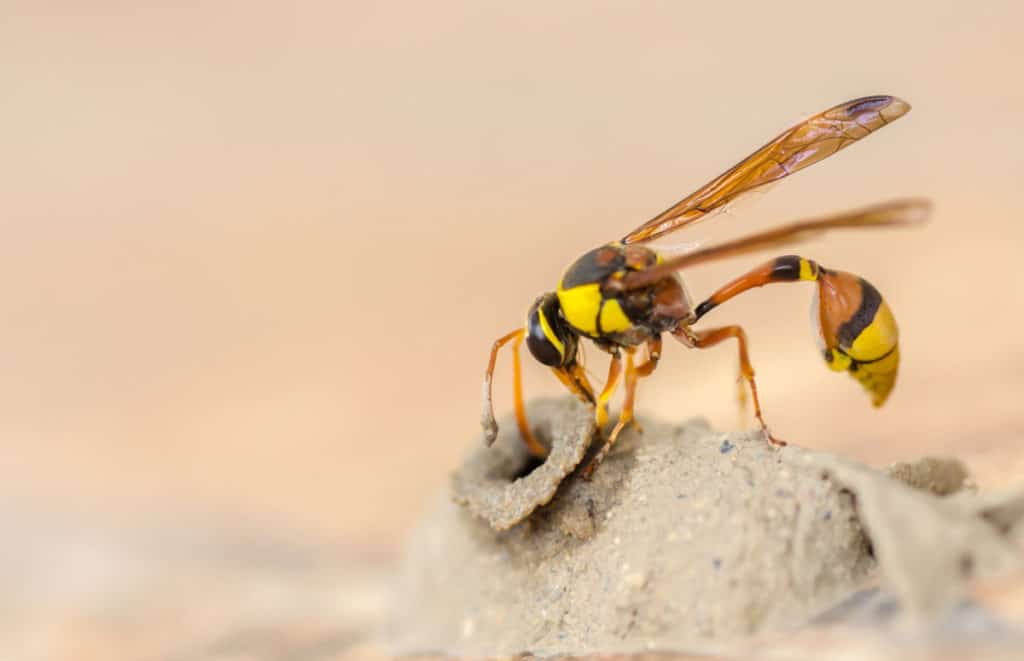
Wasps also enjoy a reputation for being fearsome predators capable of taking down much larger prey, e.g. the tarantula hawk wasp which is capable of immobilizing and capturing one of the largest most fearsome spiders on the planet.
The fact is that although they start life as carnivores, they tend to indulge their sweet tooth as they get older and prefer to feed on nectar as adults.
Wasps don’t get to live very long and will die three weeks after emerging from their nests. That said, queens get to live a bit longer, having a life expectancy of about a year.
Hornets
They’ve been called ‘gentle’ and ‘shy’ by certain arthropod experts although the sight of those ominous black and yellow bands and the sound of that sinister buzzing is sufficient to give most of us a fright.
These more corpulent versions of their comparatively smaller cousins, belong to the genus Vespa and are especially social. Like their wasp relatives, hornets are rather quite fond of nectar. However, they also love snacking on insects as well and will tuck into bees, flies, and other hexapods, even as adults.
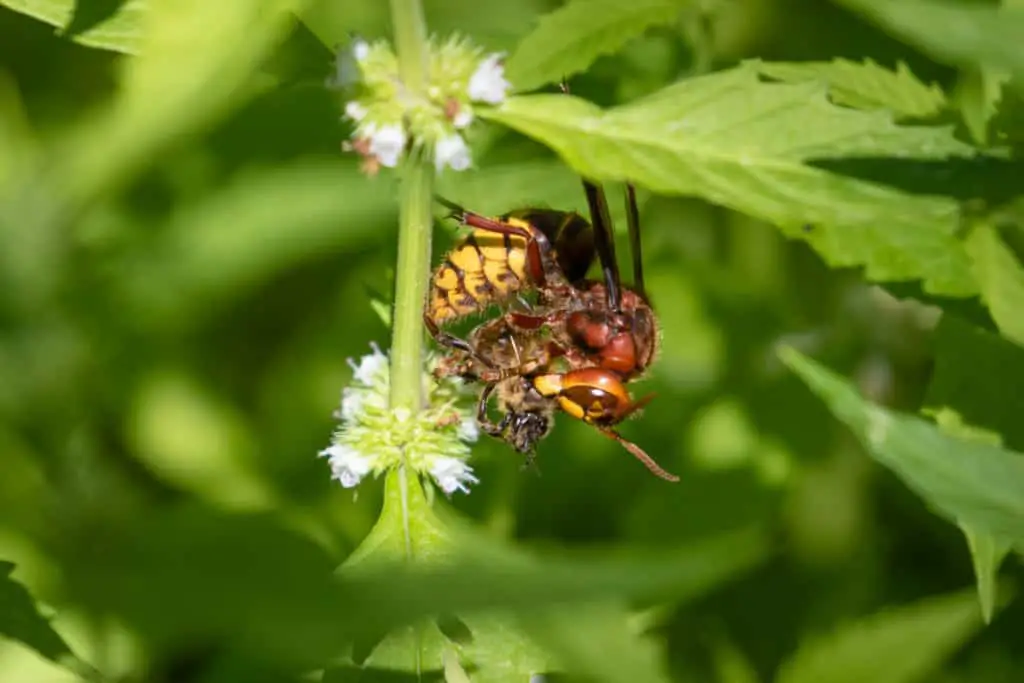
In terms of life expectancy, they are pretty much similar to wasps. Their queen will hibernate in winter with a handy store of nectar to see her through those cold months. She will emerge in spring to birth workers who are sterile females and which will die in autumn, along with her.
Wasps Vs Hornets: Size And Appearance
Wasps come with a slender ‘waist’ (also referred to as a petiole) and even their abdomens are finely tapered.
They generally measure between one-quarter to just under an inch in size (tarantula hawks are the only exception and can reach lengths of 2 inches). Certain species such as potter wasps are known to be black and yellow but may also come with red or white markings.
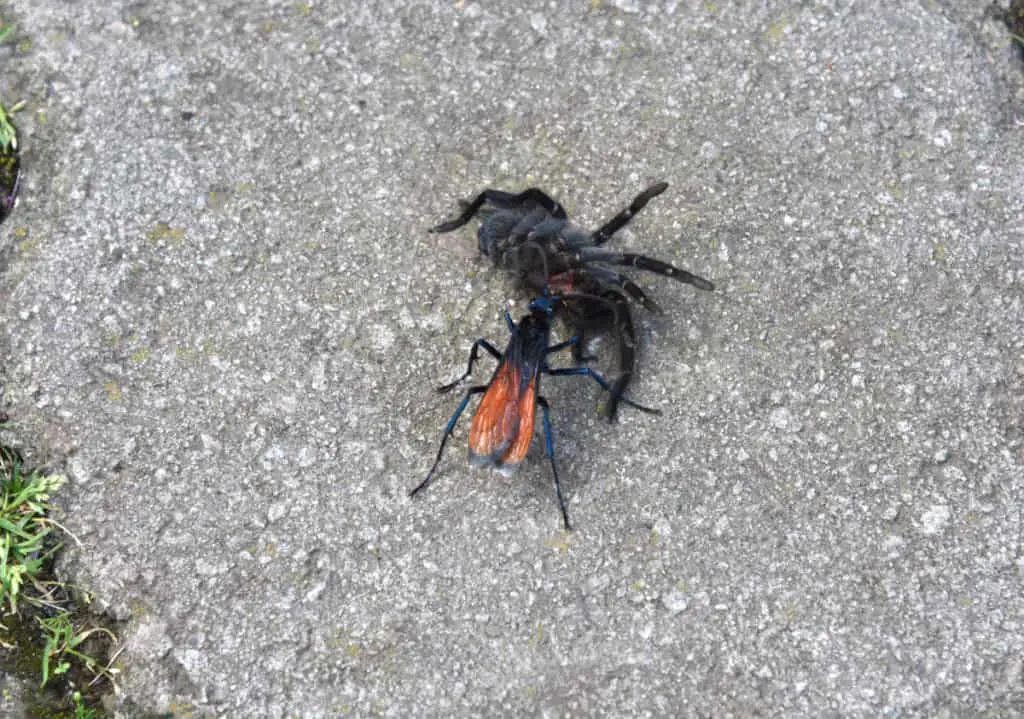
On the other hand, the red paper wasp is known for its scarlet coloring and its black wings. Certain species such as cuckoo wasps come in brilliant colors of metallic blue and green and even a hint of red, while others such as tarantula hawks are black in color.
Hornets on the other hand not only come with heavier abdomens and a less distinct waist but also measure between one to two inches, making them significantly larger than wasps.
These insects are generally not as colorful as their relatives and come in bands of black, brown, yellow and may have white markings on their bodies and heads as well.
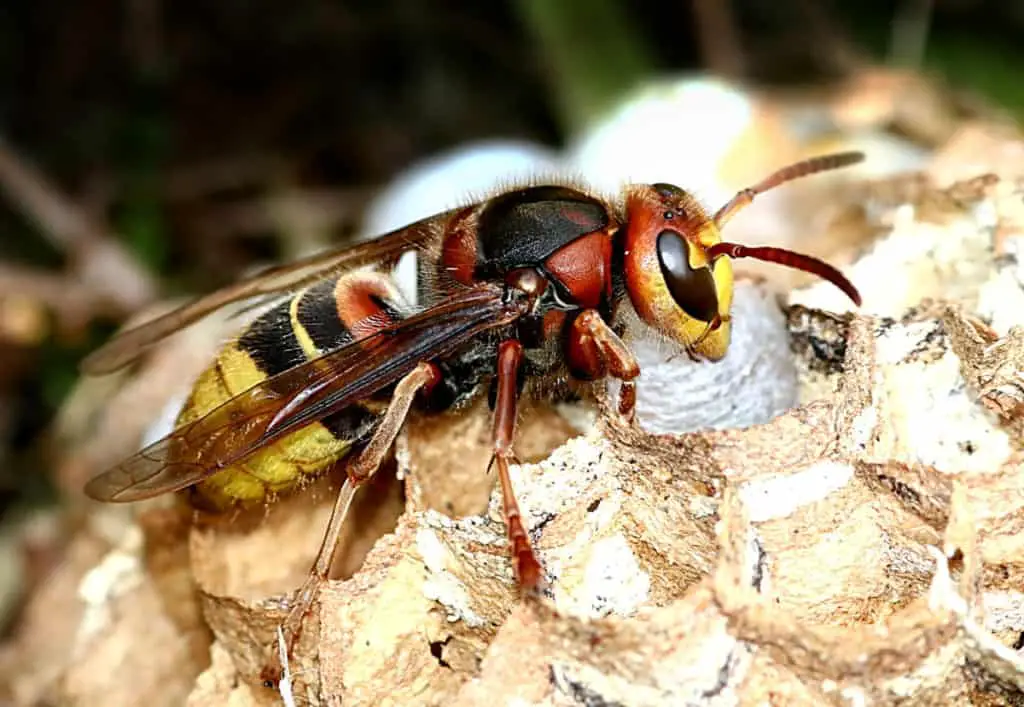
Those of the European variety (Vespa Crabro) are mostly brown but also have orange splashes on their bodies, while the Asian hornet (Vespa Velutina) has an orange head, a black thorax, and a mostly black abdomen which also comes with thin yellow bands.
The Asian giant hornet (Vespa Mandarinia) also has an orange head while its abdomen is covered in alternating thick bands of brown and orange.
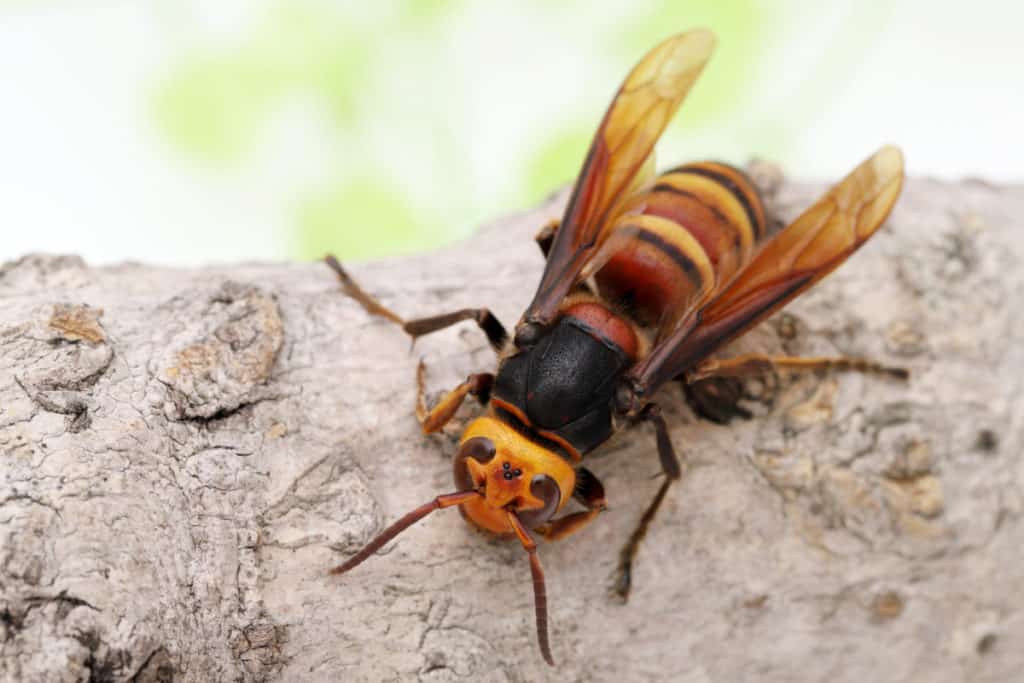
This cannibalistic species also has the distinction of being the largest vespid in the world – its queens are over 5cm in length and have a wingspan of just under 8cm.
Wasps Vs Hornets: Diet
Both wasps and hornets tend to eat nectar and pollen. They are also partial to fruit and will tuck into an apple or strawberry left unattended on your patio table. (Yellowjackets are known to be especially fond of human food and will help themselves to some cake or soda if they happen to be on the patio table too.)
Fun fact: Wasps occasionally engage in grand larceny and will raid beehives to help themselves to the honey they contain.
Hence these insects tend to hang around gardens, orchards, or wildflowers where there is likely to be an abundance of the nectar they need.
Another benefit they derive from hanging around sources of nectar is the fact that they are likely to come across other insects and arachnids such as ants, bees, and spiders.
Several of these species will sting these victims and carry them back to their lair where they will place them with their eggs providing a readily available source of food for their larvae when they hatch.
An example is the tarantula hawk which is believed to hunt tarantulas with a near 100% success rate, thanks to its, particularly potent sting. The victim will then be fed on while alive by a newly hatched larva. Unsurprisingly these arachnids which are pretty much fearsome predators in their own right, do their very best to avoid such terrifying foes.
Hornets and yellowjackets are also known to be fond of protein in addition to sugary food and will eat insects even as adults.
As a matter of fact, the latter has been known to help themselves to sausages or even turkey.
If you are interested we have another article comparing yellowjackets to other wasps. The article is called Wasps Vs Yellowjackets.
Certain hornets are known to display cannibalistic leanings. An example is the Asian giant hornet which is fond of larger-sized prey and hunts other vespids for food.
Wasps Vs Hornets: Nesting
Wasps usually rely on wood which they convert into paper for building their nests. Once they have done so, they will build a home that looks like a large ball of coarse cardboard but contains several cells. They may build this structure beneath outdoor furniture, against a wall, or inside a shed or garage.
It is a lengthy process that can take an entire summer since the queen wasp handles the task of converting the wood into paper.
Fun fact: The red paper wasp is actually known to be rather fond of large nests and builds some of the biggest of the species.
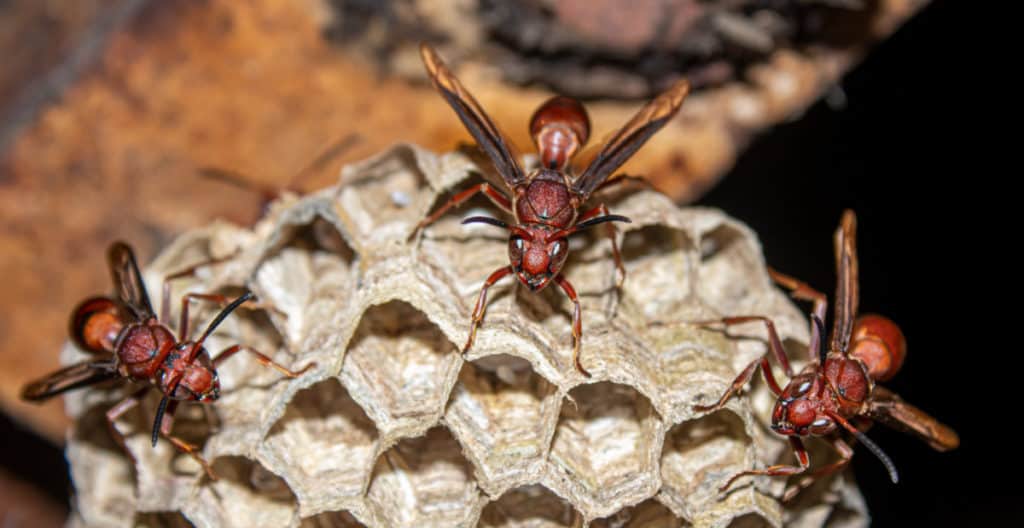
Potter or mason wasps rely on mud instead of paper and may build their nests against a wall or a tree, or even underground. A female member of this group will build several little nests, placing an egg and a larva inside each, to provide food for her offspring when they hatch, following which she will seal the enclosure.
The steel-blue cricket hunter, on the other hand, digs lengthy tunnels in the soft earth in which it will lay its eggs. Like the potter wasp, it is tolerant of its neighbors, although it must remain alert against attempts by other mothers to snag the food it provides for its young.
Hornets, on the other hand, are mostly social often build larger nests from chewed wood to accommodate all the members of their hive. They may also place this large structure in a tree with thick foliage in spots that are pretty hard to reach. Dead tree trunks or any other spot which is high above the ground such as the eaves of a building also prove to be very suitable locations.
Hornets are also known to build their nests in the underground, abandoned burrows similar to some species of bees.
Wasps Vs Hornets: Aggression And Stinging
Despite their fearful reputation, wasps do not go on the prowl, searching for potential human victims on whom to inflict a painful sting (or several since they’re capable of stinging repeatedly).
As a matter of fact, they pretty much only use their stings to immobilize prey for their offspring.
Hence the only time when they will bring those stingers out when around humans are in the event of their nests being disturbed following which they will defend their home.
Swatting at them will also make them feel threatened and put them in the mood for delivering a sting to the offender.
The pain a victim will feel when stung will depend on the species of the wasp.
For example, paper wasps are considered to deliver the least painful stings, compared to others. However, it is worth noting that the sting of these insects is considered to be more painful than a bee’s according to the Schmidt Pain Index, with a rating of three.
It is superseded by those of the fearsome tarantula hawk and the warrior wasp which both have a rating of four.
Hornets are actually considered to be less aggressive than their smaller cousins – a good thing since their stings actually hurt a lot more than wasps’.
The reason for this lies in the relatively high acetylcholine content of their venom, which in addition to the presence of histamine, is responsible for causing pain. Hornets are also capable of stinging repeatedly like every other member of their family.
The Asian giant hornet is considered to be the most lethal of all. Its venom actually contains chemicals that are harmful to the kidneys and several stings may lead to kidney failure.
Its sting (which incidentally only comes with a rating of 2 on the Schmidt Pain Index) is also especially excruciating and according to victims feels like a red hot poker piercing through the skin.
We actually have an entire article on the aggression and dangers of wasps if you are interested. The article is called, Are Wasps Dangerous?
Wasps Vs Hornets: Impact On The Environment
Benefits
Wine Fermentation
Wasps’ fondness for late-season grapes means they get to play a crucial role in the fermentation of wine.
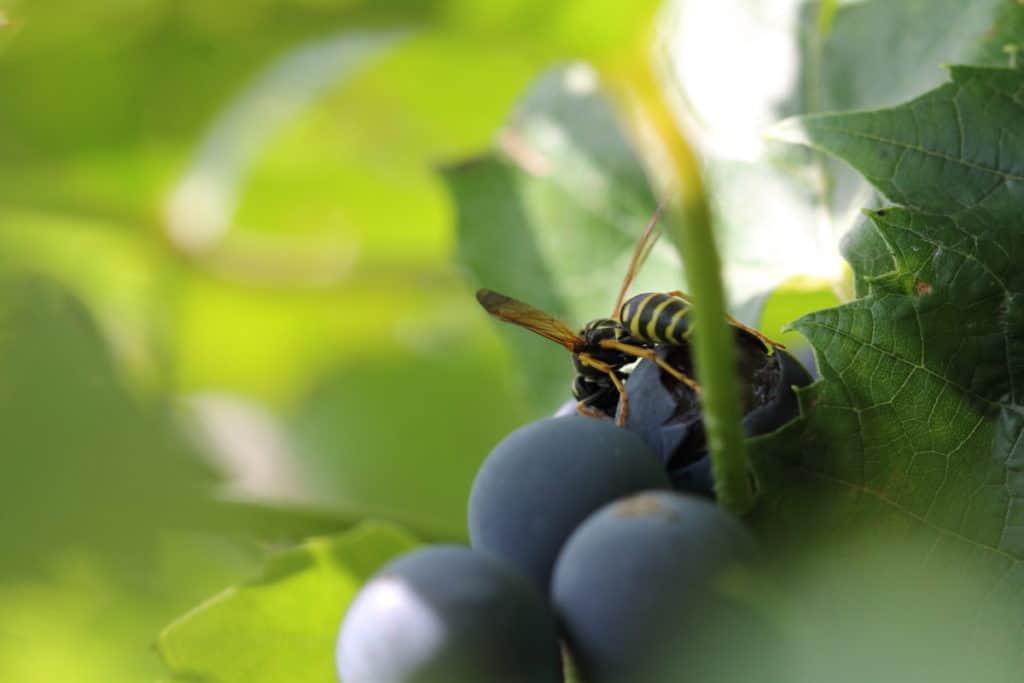
These fruits happen to be rich in yeast which makes its way to the stomach of the wasp getting its daily helping of fruit. The yeast will survive in the winged hexapod’s stomach over the winter and get transmitted to the next generation both through genetics and those masticated insects provided as food.
When these ‘new’ wasps return for some more late-season grape juice, they will transmit the yeast they possess to the grapes.
Pollination
Wasps’ love of nectar, often sees them flower-hopping during those warm summer months when so many flowers are in full bloom.
Although they are relatively hairless compared to their distant cousins, bees, they do play a role in that all-important process that is responsible for the formation of seeds and plant reproduction.
Pest Extermination
Nature is filled with greedy little herbivores who will think nothing of munching their way right through those herbs, veggies, and flowers you’ve painstakingly planted in the hope of a bountiful summer harvest.
But thanks to these slender hexapods, Mother Nature’s answer to restoring balance, these voracious critters can be kept in check.
That’s because wasps, whether vegetarian adults or those with somewhat carnivorous leanings are always on the lookout for juicy caterpillars, aphids, ants, and even spiders which can spin unsightly webs or constitute a risk due to their own venomous bites and stings.
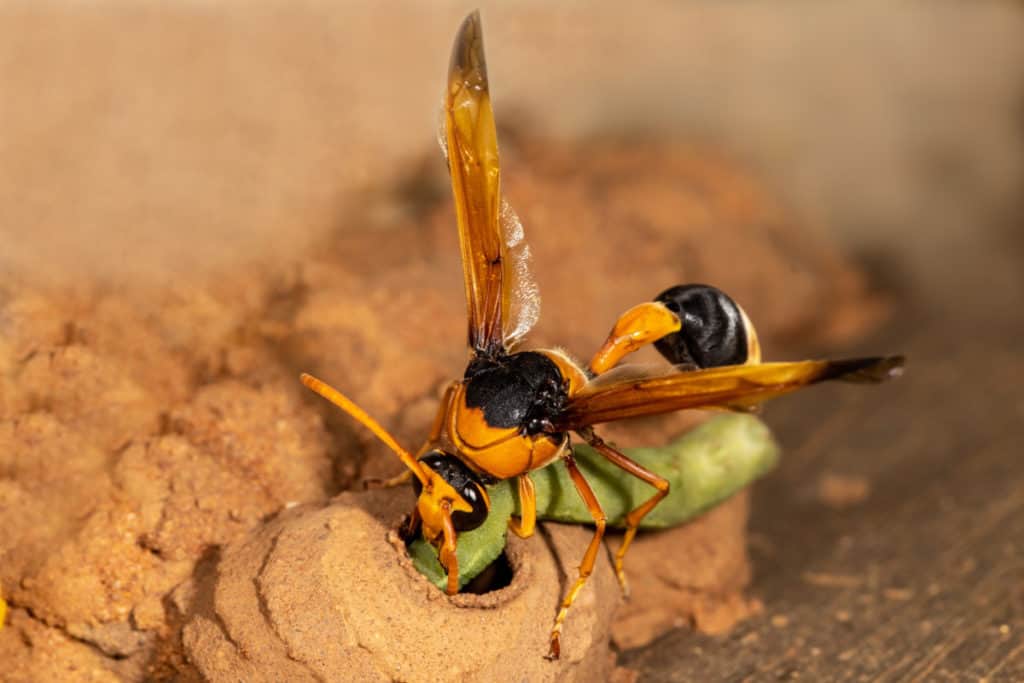
Drawbacks
Elimination Of Useful Insects
The main drawback to the presence of wasp and hornets is the risk they pose to useful insects due to their role as predators in the environment.
One of the main culprits in this regard happens to be hornets, specifically the Asian giant hornet (Vespa Mandarinia), also nicknamed the ‘Murder hornet’, which is native to East and South Asia.
Asian giant hornets have the distinction of hunting in packs and using scents to track down prey, effective tactics which spell bad news for their favorite food source: honeybees.
Once a suitable hive has been marked for the attack, a worker hornet will spray a chemical in the environs for the benefit of the invading force.
The giant Asian hornets have the ability to snatch hapless bees right out of the air and masticate them, before flying back to the hive to feed their young with their catch.
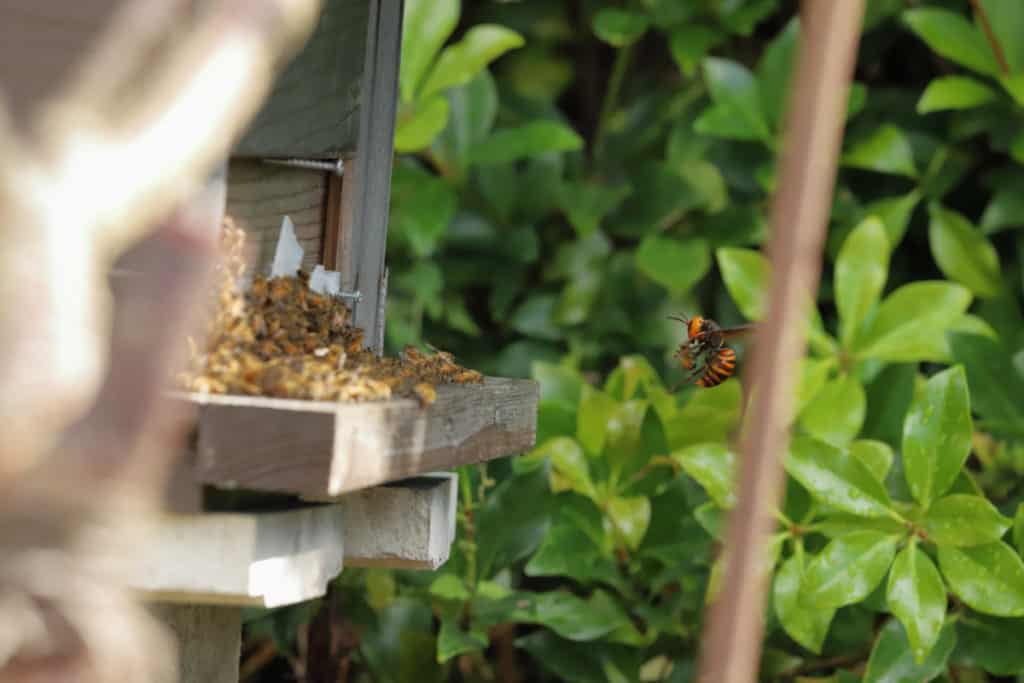
Immediately the vespid force arrives in full strength, it will take on the apian defenders at the entrance of the hive.
The latter often do their very best to sting the intruders, however, the larger size and thick chitinous armor of the invaders renders such defensive efforts ineffective.
The vespids’ sharp mandibles also give them a significant advantage enabling them to decapitate any bees they come up against. The mandibles and stingers of the worker bees have little effect on Giant Asian Hornets. As a matter of fact, a single hornet can slaughter forty bees in just sixty seconds and less than one hundred of them are capable of devastating an entire colony.
However, Asian giant hornets are by no means the only vespids that constitute a danger to honeybees. Certain wasp species such as the common wasp (Vespula Vulgaris) and the German wasp (Vespula Germanica) are known to have voracious appetites for honey bees, their nectar, and their larvae.
Waps Vs Hornets: Relatives Similar And Dissimilar All At Once
While wasps and hornets belong to the same family they have quite a few distinguishing features which set them apart.
There is the slender and graceful appearance of the former and the more solid build of the latter.
And while both are often black and yellow, wasps also come in various colors from metallic hues to red, to plain black. As for hornets go, they mostly maintain their black, brown or yellow, and orange tones to varying degrees depending on their species.
When it comes to their diet, both insect varieties love all things sugary and sweet. And yet, hornets are more likely to continue to dine on protein as adults unlike wasps – with yellowjackets being a notable exception.
And while neither wasps nor hornets are particularly aggressive, their females are both capable of delivering very painful stings with tarantula hawks and warrior wasps delivering the most agonizing of them all and the Asian giant hornet delivering the most venomous.
Vespids can be beneficial to the environment, but can also be detrimental to it too, particularly those who have a habit of preying on bees such as the Asian giant hornet.
All of which makes wasps and hornets relatives which are rather similar and dissimilar as well.
If you liked this comparison type article you might be interested in some other articles we have written comparing some other bugs. Check you the links to these articles below:
Carpenter Bees Vs Bumblebees Vs Honey Bees
Clover Mites Vs Chiggers – Are They The Same Thing?
Clover Mites Vs Spider Mites: What is the Difference?
Praying Mantis Vs Stick Bug. Are They The Same Thing?
Sources
https://arthropod.uark.edu/red-wasp/
https://hortnews.extension.iastate.edu/social-wasps
https://www.nationalgeographic.com/animals/invertebrates/facts/hornets
https://www.nhm.ac.uk/discover/what-do-wasps-do.html
https://www.nationalgeographic.com/animals/article/why-asian-giant-hornets-have-painful-stings
https://www.nhm.ac.uk/discover/the-most-painful-wasp-sting-in-the-world-explained.html

